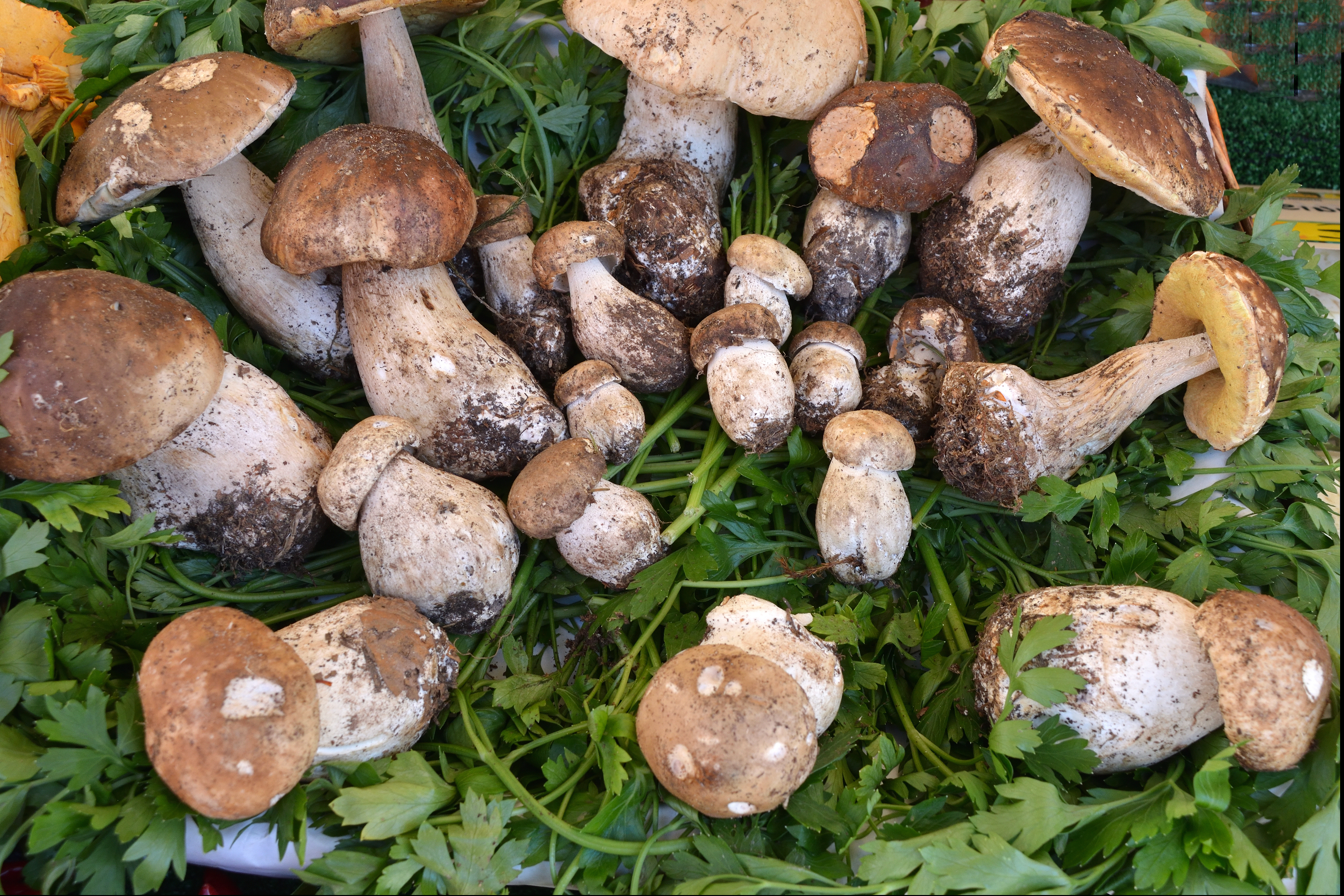Growing Media/ Substrates for Mushroom Cultivation

This post is also available in:
This post is also available in:
![]() हिन्दी (Hindi)
हिन्दी (Hindi)
Unlike green plants, mushrooms do not produce chlorophyll, so they cannot absorb light energy to get fed. They absorb the nutrients they need to grow entirely from the substrate they grow into. Depending on their nature (life cycle) and physiology, mushrooms are categorized into three main categories:
- Saprobic/Saprotrophic mushrooms (decomposers) → feed on dead-decomposed organic matter. Mushrooms in this category can be further subclassified into “litter decomposers” and “wood decay” fungi, depending on the type of matter they break down and exploit.
- Parasitic mushrooms → Infect living organisms, exploiting their resources and causing diseases.
- Symbiotic mushrooms → Grow in a symbiotic relationship with another organism. Mycorrhizal mushrooms belong in this category.
A grower should choose or/and prepare a substrate (type, composition) depending on the mushroom variety he/she wants to grow (most edible mushrooms are decomposers (saprotrophic). Such substrate should provide sufficient moisture and nutrients (a lot of carbon) for the fungus to grow and produce fruiting bodies (mushrooms).
Substrates are mainly divided into two main categories.
- Composted substrates. Composted substrates may comprise grain straw, hay, leaves, corn cobs, manure, water hyacinth, etc. Besides mushroom compost, which usually contains wheat straws and horse manure, synthetic composted substrates can be used. Synthetic compost describes any mushroom compost that does not contain horse manure. The production of composted substrates is usually energy, labor, and cost-intensive as well, as it may negatively impact the environment.
- Non-composted substrates (e.g., wood, grain-based substrates). This substrate may comprise cereal straw, leaves, corn residues, cotton seed waste, rice or wheat straw, sugarcane bagasse, oil palm residues, wood logs, wood chips, or sawdust. This type of substrate is widely used by commercial growers of Pleurotus, Volvariella, Flammulina, and Stropharia mushrooms. In some cases, even trunks of living trees are used.
Not every substrate is suitable for every mushroom type. Different substrate types and compositions (and microbial diversity) can affect the growing yield and quality of mushrooms. Here, we demonstrate the suitable substrate for some widely grown varieties.

In large-scale commercial mushroom farms, growers produce the substrate needed by themselves. This procedure has a high cost at first due to all the required special equipment, but it can turn cost-effective in the long term.
In all cases, one of the essential factors for profitable mushroom growth and production is the ratio of C (carbon) and N (nitrogen) (depending on the need of each mushroom species). For example, Pleurotus species can successfully yield when the substrate C/N ratio ranges from 45 to 60 / 1, while for Agaricus bisporus, the optimum ratio is 19/1. As a result, supplementing organic or inorganic nitrogen into the substrate is usually necessary for obtaining high yields.
Further reading
15 Interesting Facts About Mushrooms
Mushrooms: Information, Nutritional Value and Health Benefits
How to Easily Grow Mushrooms at Home
How to Start a Mushroom Farm for Profit
Mushroom Biological Cycle and Growing Requirements
Where can I grow Mushrooms – Mushroom facilities & equipment
Growing Media/ Substrates for Mushroom Cultivation
How to Produce Composted Substrate for Mushroom Cultivation
Mushroom Harvest, Yields, and Post-Harvest Handling
References
- https://digital.lib.uidaho.edu/utils/getfile/collection/ui_ep/id/31256.pdf?_ga=2.112564876.929777657.1662553863-1080700454.1662553863
- https://library.uniteddiversity.coop/Permaculture/Mushroom_Cultivator-A_Practical_Guide_to_Growing_Mushrooms_at_Home.pdf
Scrase, R. (1996). Cultivating mushrooms: making composted and non-composted substrates. Mycologist, 10(2), 52-55.
Suwannarach, N., Kumla, J., Zhao, Y., & Kakumyan, P. (2022). Impact of Cultivation Substrate and Microbial Community on Improving Mushroom Productivity: A Review. Biology, 11(4), 569.
Beetz, A. & Kustudia, M. 2004. Mushroom cultivation and marketing. Horticulture Production Guide. ATTRA Publication IP 087.









































































